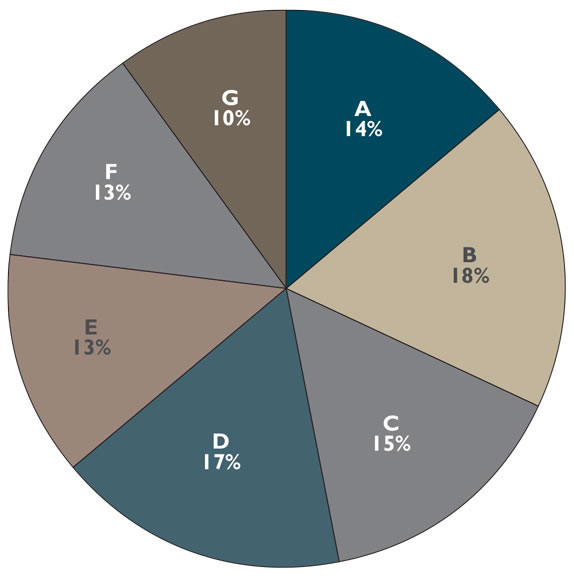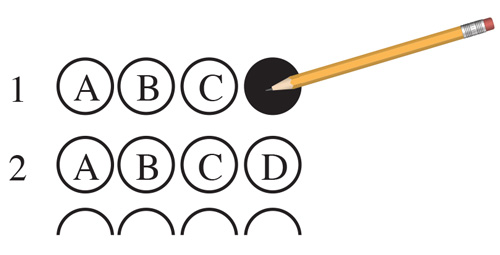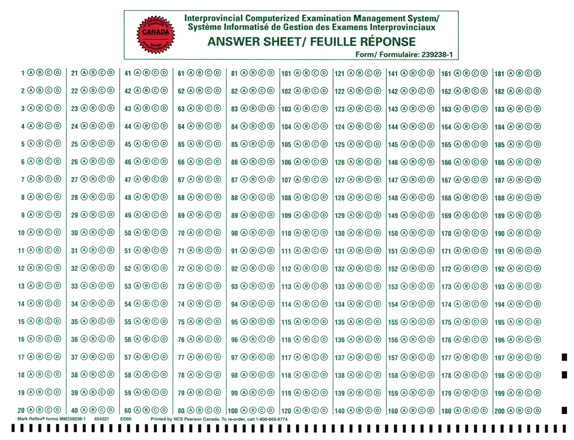Skill Development
-
If you have experience as a Trade Worker, Trade Assessment not only get your past experience verified, but also may be eligible to challenge the Red Seal Exam. Please complete the following details and upload your Resume.

Complete this form, and submit to our professional staff, you will be contacted within 2 business days by our company with a solution Apply today!
-
Source: http://www.red-seal.ca/
The Red Seal Program, formally known as the Interprovincial Standards Red Seal Program, is a program that sets common standards to assess the skills of tradespeople across Canada. Industry is heavily involved in developing the national standard for each trade. It is a partnership between the federal government and provinces and territories, which are responsible for apprenticeship training and trade certification in their jurisdictions.
Tradespersons who have successfully passed the Red Seal examination receive a Red Seal endorsement on their provincial/territorial trade certificate. The Red Seal, when affixed to a provincial or territorial trade certificate, indicates that a tradesperson has demonstrated the knowledge required for the national standard in that trade. The Red Seal endorsement promotes excellence to employers, instills pride in skilled workers, and facilitates labour mobility. Certification and Red Seal endorsement of a tradesperson can be confirmed with the provincial or territorial apprenticeship authority that issued the Red Seal.
The Red Seal Program was created following the first National Conference on Apprenticeship in Trades and Industries, which was held in Ottawa in 1952. Participants recommended that the provinces and territories ask the federal government to work with their apprenticeship committees and officials to prepare standards for the skilled trades
Source: http://www.red-seal.ca/
Provinces and territories are responsible for apprenticeship training and trade certification in their respective jurisdictions, including the administration of the Red Seal Program in their jurisdictions (for example, Red Seal examinations). Most provinces and territories use the Red Seal examination as the final certification exam in designated Red Seal trades. The Canadian Council of Directors of Apprenticeship (CCDA) is responsible for the Red Seal Program. All provinces and territories and the federal government participate as members of the CCDA.
Employment and Social Development Canada (ESDC) sponsors a Red Seal Secretariat to provide strategic and secretariat support to the CCDA and the Red Seal program.
Source: http://www.red-seal.ca/
This exam preparation guide is designed to inform you about the Red Seal exam process. The guide provides you information about what to do before taking your Red Seal exam, the exam itself and what happens after you write your exam. The Red Seal exams are developed in collaboration with provinces and territories across the country. However, provincial and territorial apprenticeship authorities are responsible for managing and administering the exams for Red Seal trades (Appendix A). If you meet all the requirements to write the Red Seal exam for your trade, please contact your provincial or territorial office (Appendix B) to register.
The exam preparation guide also provides strategies for test preparation and study habits. It contains examples of: multiple choice questions, study plan, assessment checklist, and other useful tips to help you prepare for the Red Seal exam.
Contact your local apprenticeship office for further information and assistance in preparing for your Red Seal exam.
Source: http://www.red-seal.ca/
To write the Red Seal exam for your trade, you must meet the requirements of your province or territory. If you are an apprentice or a trade qualifier, eligibility criteria to the Red Seal exam may be different.
- Apprentice: You are completing an apprenticeship program that has been registered with your provincial or territorial apprenticeship office.
- Trade qualifier or “challenger”: You are experienced in your trade but you have not completed an apprenticeship program and you are not certified as a journeyperson.
Note: If you are a foreign national who has previous experience in one of the trades, you may be eligible to challenge the red-seal exam, the first step to challenge this exam, your previous work experience has to be assessed by the concerned provincial body, if you want us to assist you in the process of assessment, click here to submit the form.
- Journeyperson: You hold a Provincial or Territorial Certificate of Qualification or the equivalent.
Requirements may also vary by trade. Check your provincial or territorial apprenticeship and certification website (Appendix B) for more information on the criteria that applies to your situation.
Source: http://www.red-seal.ca/
The Red Seal exams are administered by the provincial and territorial apprenticeship and certification authorities. You must register at one of their offices in order to write the Red Seal exam.
Most provinces and territories have application forms available on their website. If you have questions or cannot find the Red Seal exam application form, contact your provincial or territorial apprenticeship office When registering, you may also ask about the following:
-
Exam language
Choose whether you want to write the exam in English or in French. Confirm with your provincial or territorial office that your copy will be in the language of your choice.
-
Special needs
If you have special needs, ask about accommodations you may be entitled to when writing the exam. Keep in mind that the request for accommodation has to be made well in advance..
The cost of the exam varies by province and territory. Your apprenticeship office will let you know the cost when you register for your exam.
-
Book time off
Schedule enough time off with your employer to avoid being rushed.
-
Getting to the exam
Make sure you know exactly where and when the exam will take place. Plan ahead and allow yourself plenty of time for traffic, parking, late buses, etc.
Contact your provincial or territorial apprenticeship office to reschedule your exam.

Complete this form, and submit to our professional staff, you will be contacted within 2 business days by our company with a solution Apply today!
-
To earn your Red Seal endorsement, you will be tested on the knowledge, skills and abilities that are outlined in the National Occupation Analysis (NOA) for your trade.
Your trade’s NOA is your best study guide. The Red Seal exam questions are based on the NOA sub-tasks.
The NOA outlines important information about your trade:
- Trade activities (tasks and sub-tasks)
- Trends
- Essential skills
- Safety measures
- Technical terms
- Glossary
- Tools and equipment
- Acronyms
Each trade’s NOA is available on the Red Seal website.
The NOA for your trade is organized into the following headings: Blocks, Tasks and Sub-tasks.
BLOCKS: The NOA is divided into major content areas called Blocks. Each block includes the trends that impact the trade related to the block, the components (products, items, materials) relevant to the block, and the tools and equipment used to perform all tasks in the block.
TASKS: The Blocks are then divided into Tasks. Each task gives the context to clarify the intent and meaning of the task. It also lists the required knowledge that an individual must acquire to adequately perform the task.
SUB-TASKS: The Sub-tasks are the specific functions you perform in relation to a task. Key competencies appear under each sub-task that describe the activities you should be able to do to be considered competent in your trade.
Examples of Block, Task and Sub-task headings for the carpenter NOA.

Source: Carpenter NOA 2013
Caption: This is example of the Block, the Task and the Sub-task heading for the carpenter NOA.
Remember: the Red Seal exam covers the scope of the trade included in the NOA.
Look at the exam breakdown
To plan your study time, have a look at the appendices of your trade’s NOA. You will find a Pie Chart similar to this one:

Titles of Blocks
This pie chart demonstrates the percentage of the total number of questions on the exam assigned to eachblock of the NOA.
- Block A – Common Occupational Skills - 14%
- Block B – Planning and Layout - 18%
- Block C – Concrete - 15%
- Block D – Framing - 17%
- Block E – Exterior Finish - 13%
- Block F – Interior Finish - 13%
- Block G – Renovations - 10%
Source: Carpenter NOA 2013
The percentage of the total number of questions on the exam assigned to each block of the NOA comes from the collective input from tradespeople within the occupation from all areas of Canada.
This information also appears on the Exam Counselling Sheet, available on the Red Seal website.
Percentage of Questions for each Block of the Trade
Titles of Blocks Percentage (%) of questions on exam A – Common Occupational Skills 14 B – Planning and Layout 18 C – Concrete 15 D – Framing 17 E – Exterior Finish 13 F – Interior Finish 13 G – Renovations 10 Total 100 In this case, if the exam has 100 questions, 14 questions would be on Block A, 18 on Block B, etc.
The Block and Task Weighting tables, available in all NOAs, will give you more precise information related to the percentage of questions for each task in each block.
Note: The number of questions on an exam vary between 100 and 150, depending on the trade.
Block and Task Weighting
Block D: Framing
NL NS PE NB QC ON MB SK AB BC NT YT NU National Average % 15 15 23 14 NV 15 15 14 19 15 NV 22 NV 17% The first table shows the percentage that each province and territory recommended for this specific block in the NOA. The number you need to focus on is the National Average, which is the actual percentage of questions for each block on the exam. In this example, 17% of the questions are on Block D. Therefore, if the exam has 100 questions, 17 questions (100 X 17%) are on Framing.
Task 10: Constructs floor systems
NL NS PE NB QC ON MB SK AB BC NT YT NU National Average % 25 30 30 32 NV 25 25 33 25 25 NV 30 NV 28% The second table shows the percentage of questions assigned to a specific task in the block. This means, 28% of the questions from Block D are on Task 10. Therefore, on a 100-question exam, about 5 questions are on Constructs Floor Systems (100 x 17% x 28%).
The exam breakdown will help you focus on the blocks and tasks that make up most of your trade exam. Make sure that you cover each block and all tasks and sub-tasks when you prepare for your Red Seal exam.
Create a checklist
The Task Profile Chart at the very end of the NOA is a visual overview of all the tasks and sub-tasks you need to know to perform in your trade.
Use it as a self-assessment tool, by checking off the sub-tasks in which you are experienced and knowledgeable. Then highlight the topics you need more experience on. Check to see how much weight is assigned to these sections. You will then see which area you need to focus on when preparing for your Red Seal exam.
Review your terminology
The appendices of your NOA contain information on the terms you need to know in your trade. These terms may be used in exam questions, along with other technical terms related to the sub-tasks.
Use it as a self-assessment tool, by checking off the sub-tasks in which you are experienced and knowledgeable. Then highlight the topics you need more experience on. Check to see how much weight is assigned to these sections. You will then see which area you need to focus on when preparing for your Red Seal exam.
Tools and Equipment:
Schedule enough time off with your employer to avoid being rushed.
Glossary:
Definitions for technical terms used in the NOA.
Acronyms:
A listing of acronyms used in your trade and what they stand for.
Example of the Task Profile Chart for the Carpenter trade. Blocks Tasks Sub-tasks D – Framing 10. Constructs floor systems. 10.01 Installs engineered floor systems.
10.02 Constructs dimensional lumber floor framing.
11. Constructs deck systems.
11.01 Constructs decks.
11.02 Installs decks components.
12. Constructs wall systems. 12.01 Installs engineered wall systems. 12.02 Installs decks components. Source: Carpenter NOA 2013
Red Seal exams are made up of multiple choice questions. Familiarize yourself with the format by testing yourself with sample questions.
Disclaimer: The practice questions are used to demonstrate the structure and phrasing of Red Seal exam questions. They are for study purposes only. Success on these questions will NOT result in certification and does NOT represent how you will perform on the exam.
Take note that the Red Seal Program is not responsible for the development of the questions and tools on any other websites and does not endorse them.
Examples of different types of questions you may see on your Red Seal exam.
Note: These questions come from the sample questions available on the Red Seal website.
Some questions are used to check your trade knowledge.
In which circuit conductor must switches for lighting be connected?
- Unfused.
- Identified.
- Grounded.
- Ungrounded.
Source: Construction Electrician trade sample question
Some questions test your ability to apply mathematical formulas to a trade-related situation.
The shaft is 23.029 in. long and the gear assembly length is 23.015 in. What thickness of shims is required if the gear assembly requires a 0.005 in. preload?
- 0.005 in.
- 0.009 in.
- 0.014 in.
- 0.019 in.
Source: Agricultural Equipment Technician trade sample question
Some questions are used to check problem solving skills related to your trade.
How is a compressed air line installed to allow draining of condensation from the piping system?
- By installing the piping level and providing a drip leg.
- By grading up in the direction of flow with an air vent at the high point.
- By grading down in the direction of flow towards the condensation collection point.
- By installing the piping level and connecting branches to the bottom.
Source: Steamfitter/Pipefitter trade sample question
Some questions may use metric and/or imperial systems. Depending on your trade, one or two systems may be used. Make sure you understand both.
A roof has a 1 in 3 (4 in 12) slope and a 750 mm (30 in.) overhang. The exterior walls measure 150 mm (6 in.) thick overall. Which width of eave protection is required?
Metric Imperial A. 900 mm 36 in. B. 1,050 mm 42 in. C. 1,200 mm 48 in. D. 1,350 mm 54 in. Source: Roofer trade sample question
Note: Other types of questions, such as interpretation of diagrams, can also be found on the Red Seal exam.
1. Language Training
If your first language is not English or French, check with your local apprenticeship office about language training options to help prepare you to take the exam.
2. Essential Skills Self-Assessment and Training
Essential skills refer to skills you need to learn, work and live. They are:
Essential Skills Reading Understanding materials written in sentences or paragraph (e.g. letters, manuals) Writing Writing texts and writing in documents (for example, filling in forms)
Non-paper-based writing (for example, typing on a computer)Document Use Use of a variety of information displays (e.g. graphs, lists, tables, blueprints, schematics, drawings, signs and labels) Numeracy Use of numbers and capability to think in quantitative terms Computer Use Use computers and other forms of technology Thinking Problem solving
Decision making
Critical thinking
Job task planning and organizing
Significant use of memory
Finding informationOral Communication Use of speech to give and exchange thoughts and information Working with Others Work independently, alongside others or as a member of a team Continuous Learning Knowing how to learn
Understanding one’s own learning style
Knowing how to gain access to a variety of materials, resources and learning opportunitiesEssential skills are used in specific contexts in each trade. Refer to the NOA for your trade to find out how essential skills are used in your trade..
A self-assessment tool and other learning resources are available on the Employment and Social Development Canada website. Evaluate which areas you need to work on and refer to your apprenticeship office for information on how to upgrade your essential skills.
The following website also contains advice on preparing for you Red Seal Exam.
3. Dealing with Stress and Exam Anxiety
The Red Seal exam is an important step to becoming certified. Even with adequate preparation, you may feel stressed and anxious. A bit of stress might be beneficial as it keeps you alert. However, if you feel too anxious before or during your exam, you may make some mistakes that could be avoided by following these simple tips:
- Plan your time: Allow yourself enough time to learn and study before your exam. It might be a good idea to schedule your exam a few weeks later if it helps you to succeed on your first attempt.
- Breathe: Calm and deep breathing may help you to re-focus on your goals and to find the answers more easily.
- Talk to yourself: Remind yourself of why you are taking the exam, remember the time and effort you have put into your training and exam preparation.
- One step at a time: Concentrate on one task at a time, and on one question at a time. If you can’t answer a question, note the number and come back to it at the end. Answer every question to the best of your abilities.
- Fill your mind with positive images: Your last vacation, your favorite activity, someone who helps you to feel grounded. Once you feel more calm, return to your study or to your exam sheet.
- Physical activity helps to deal with stressful situations like exams. Enough rest and proper nutrition are also key to dealing with anxiety.
- If these strategies don’t work for you, you may develop other methods to reduce anxiety or consider consulting a specialist.
4. Study Strategies
- Prepare a summary or create flashcards, flowcharts and diagrams of key information, including:
- formulas
- definitions
- key concepts.
- Ask your employer and your co-workers for help in the areas where you feel less confident.
- Take an exam preparation course (if available — contact your local apprenticeship office).
- Make sure you use the code book the exam is based on (if applicable). Read textbooks (if you don’t have any, ask for recommendations at the library or a local college).
- Try teaching another tradesperson, friend or co-worker. You will find teaching someone else requires a good understanding of the subject.
- Study on your own first to identify what you don’t know. Then, study with others who are preparing for the same exam.
- Allow yourself enough time to study each block in advance, and to do a general review a few days before the exam.
- Find study strategies and memory techniques that work well for you, such as creating sentences with the first letters of key words, re-writing your notes, drawing, or even singing your formulas! Be creative!
- Create a study plan. Try using a blank weekly or monthly calendar, depending on the time you have before your exam. Highlight the times of each day to plan for your study. It’s more efficient to plan regular periods each day than to condense all the study for one long time period at the last minute.
- Don’t procrastinate!
- Once you have a study plan, stick to it.
Your study plan should include time for:
- Self-assessment (sub-tasks, essential skills, language skills, etc.)
- Studying
- Answering sample questions
- Reviewing
- Resting
Example of a study plan: Monday Tuesday Wednesday Thursday Friday Saturday Sunday Work
Ask for time off to write exam
Work
Work
Ask employer about sub-tasks B-7.02 and C-11.03
Work
Ask colleagues about calculations of quantity of material
Work
9am to 12pm
Glossary, acronyms and math formulas12pm to 2pm
Rest2pm to 5pm
Practice sample questions10am to 12pm
Review all blocks1pm to 4pm
Review NOA + Task profile Chart6pm to 7pm
Assess essential skills7pm to 9pm
Study Blocks A and B5pm to 6pm
Gym6:30pm to 9pm
Review Blocks A and B
Study Block C5pm to 6pm
Review C6:30pm to 9pm
Study Block D5pm to 6pm
Review D6:30pm to 9pm
Study Blocks E and F5pm to 6pm
Gym6:30pm to 9pm
Review Blocks E and F5pm to 6pm
Gym6:30pm to 8:30pm
Go to bed early: exam is tomorrow!
You could also base your study plan on the Task Profile Chart of your trade. For example: Content to cover Actions Level of knowledge Resources Study dates and time required Maintains suspension
systemsLink cause to effect if suspension problem
Weak
Co-workers
Monday morning
2 hoursRepairs rubber block suspension systems
Explain procedure to fix it
Name tools neededAverage
Video
TextbookGlossary (NOA)
Tuesday morning
45 minutes
You could also base your study plan on the Task Profile Chart of your trade. For example: Content to cover Actions Level of knowledge Resources Study dates and time required Maintains suspension
systemsLink cause to effect if suspension problem
Weak
Co-workers
Monday morning
2 hoursRepairs rubber block suspension systems
Explain procedure to fix it
Name tools neededAverage
Video
TextbookGlossary (NOA)
Tuesday morning
45 minutes
1. What to bring to the exam?
- Photo ID (government-issued personal identification, such as a valid driver’s license)
- Apprenticeship I.D. from your jurisdiction (if applicable)
- Exam confirmation letter
- Any other materials listed in your exam confirmation letter
2. What to expect during the exam?
- You will not be allowed to talk to other candidates.
- During the exam you are not allowed to access personal items, such as bags, mobile phones or any type of electronic or communication devices.
- In some trades, you may be provided with reference documents such as code books. Your exam may include a diagram booklet, an acronym sheet and a mathematical formula sheet.
- You will have to fill out the personal information section on your answer sheet. Wait for the signal from the invigilator of the exam before marking the answer sheet.
- All materials must be returned to the invigilator of the exam.
- If you don’t follow these rules, your exam may be invalidated.
3. What is the exam format?
- The maximum time allowed is 4 hours.
- There are between 100 and 150 questions per exam depending on the trade.
- You will receive an exam package containing the questions, an answer sheet and scrap paper.
- All questions are multiple choice and of equal value.
- Each question has four possible choices (A, B, C and D). Only one answer is correct.
- The pass mark is 70%.
Red Seal exams are written exclusively in a multiple choice format. There are no trick questions. Each question has four possible choices. The three incorrect answers are called ‘distracters’ because they are intended to look believable and distract you from the correct answer if you don’t know your trade adequately. You will need to read the question carefully as a single word can change the meaning of the answer.
Example:
1. Which trade is a designated Red Seal trade?
- Florist
- Locksmith
- Shipwright
- Boilermaker
In this example, the correct answer is D. The other three possible answers are the distracters. Although believable, as they are all trades, all three are incorrect because they are not Red Seal trades. Once you have chosen your answer, completely fill the appropriate circle on your answer sheet. The answer sheet is separate from your exam booklet.
If the answer to question one is D, go to line 1 on the answer sheet and completely fill in the D circle.

Example of the answer sheet you will receive for your exam.

The exam is graded by a computer, so when marking your answers:
- use an HB pencil only.
- press firmly with the pencil to ensure the circle is filled in completely.
- to change an answer, erase cleanly.
- do not make stray marks on the answer sheet.
- check regularly to ensure your mark is on the correct line, especially if you have skipped any questions.
What happens after you take the Red Seal exam?
Red Seal exam results
Your provincial or territorial apprenticeship and certification office will send you your exam results. This can take up to four weeks. Refer to your exam confirmation letter for more information.
Results are not released over the phone.
Receiving your Red Seal
If you are completing your provincial or territorial certification at the same time as your Red Seal exam, the Red Seal may be affixed to your provincial or territorial certificate.
If you already have a provincial certificate and you want to have the Red Seal affixed to your card, you may need to send your current card to your provincial and territorial apprenticeship office. Refer to your exam confirmation letter for more information.
What if you do not pass your exam?
The Red Seal is the standard of excellence in your trade. As such, Red Seal exams are designed to test the national scope of the trade. If you have less experience in some of the tasks and sub-tasks, you may not pass on your first attempt.
If you do not achieve the 70% pass mark, the number of times you can attempt the exam and the waiting period between attempts are determined by each province and territory. A course of study, approved by the jurisdictional certification authority, must be successfully completed before the third and every subsequent attempt. Contact your local apprenticeship and certification office for clarification.
The following trades are designated as Red Seal trades. Note that your province/territory may have a different name for the trade.
- Agricultural Equipment Technician
- Appliance Service Technician
- Automotive Painter
- Automotive Service Technician
- Baker
- Boilermaker
- Bricklayer
- Cabinetmaker
- Carpenter
- Concrete Finisher
- Construction Craft Worker
- Construction Electrician
- Cook
- Drywall Finisher and Plasterer
- Electric Motor System Technician
- Floorcovering Installer
- Gasfitter — Class A
- Gasfitter — Class B
- Glazier
- Hairstylist
- Heavy Duty Equipment Technician
- Heavy Equipment Operator (Dozer)
- Heavy Equipment Operator (Excavator)
- Heavy Equipment Operator (Tractor-Loader-Backhoe)
- Industrial Electrician
- Industrial Mechanic (Millwright)
- Instrumentation and Control Technician
- Insulator (Heat and Frost)
- Ironworker (Generalist)
- Ironworker (Reinforcing)
- Ironworker (Structural/Ornamental)
- Landscape Horticulturist
- Lather (Interior Systems Mechanic)
- Machinist
- Metal Fabricator (Fitter)
- Mobile Crane Operator
- Motor Vehicle Body Repairer (Metal and Paint)
- Motorcycle Mechanic
- Oil Heat System Technician
- Painter and Decorator
- Partsperson
- Plumber
- Powerline Technician
- Recreation Vehicle Service Technician
- Refrigeration and Air Conditioning Mechanic
- Rig Technician
- Roofer
- Sheet Metal Worker
- Sprinkler System Installer
- Steamfitter/Pipefitter
- Tilesetter
- Tool and Die Maker
- Tower Crane Operator
- Transport Trailer Technician
- Truck and Transport Mechanic
- Welder
For information on apprenticeship training and certification, you are encouraged to contact your provincial or territorial apprenticeship office. A representative will be able to guide you through the process.
Date modified: 2016-11-07
If you are a professional who has past work experience as a Welder, Cement Finisher or a Cook, you may be eligible to apply for Red Seal Certification. Please click to submit your details.

Complete this form, and submit to our professional staff, you will be contacted within 2 business days by our company with a solution Apply today!






